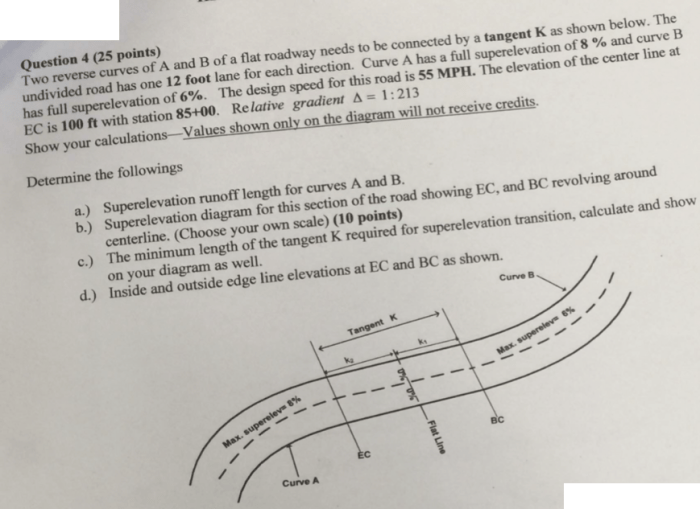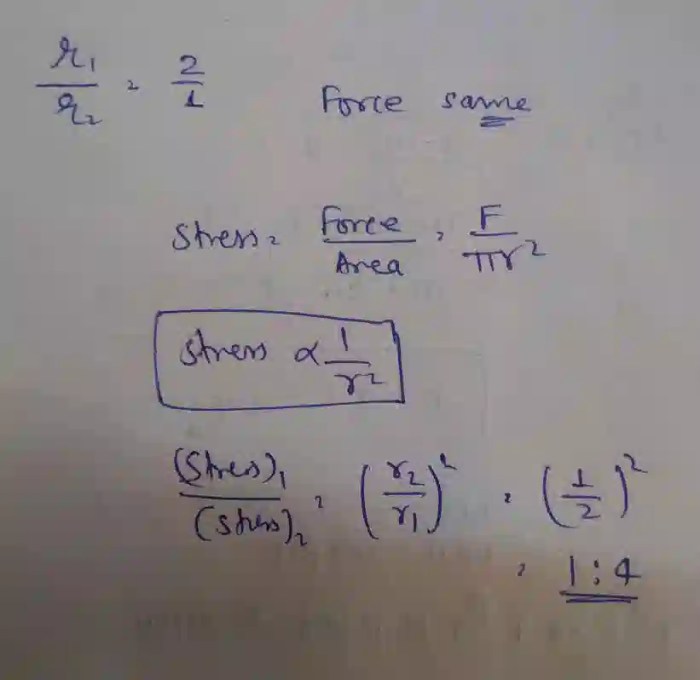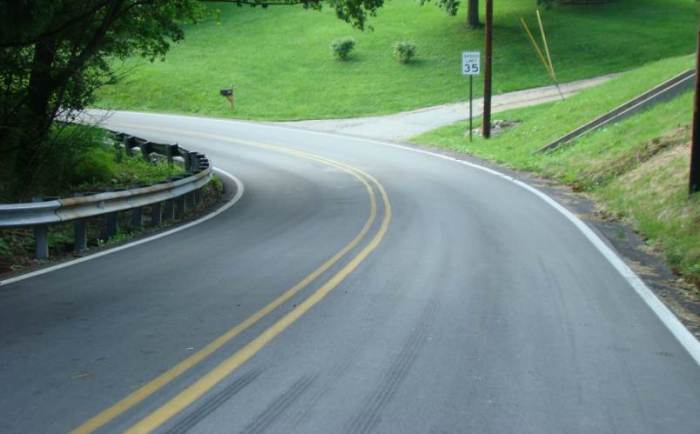Two curves on a highway have the same radii – When two curves on a highway share the same radii, a captivating interplay of geometry, driving dynamics, and engineering considerations unfolds. This intriguing scenario invites us to explore the intricate relationship between curve characteristics, geometric symmetries, and their profound impact on traffic flow and safety.
Embarking on this journey, we unravel the complexities of highway design, seeking to optimize the driving experience while ensuring structural integrity and durability.
As we delve into the intricacies of these equal-radii curves, we uncover their influence on vehicle stability, handling, and overall safety. Through mathematical equations and illustrative diagrams, we unravel the geometric relationships that govern their behavior. Furthermore, we investigate the impact of varying the distance between the curves, exploring its implications for traffic flow and capacity.
Curve Characteristics
Curves on a highway are designed with specific radii to ensure optimal driving conditions. The radii of the curves influence their shape, behavior, and significance in highway design.
When two curves on a highway have the same radii, a unique set of characteristics emerges:
Relationship between Radii
- The radii of the two curves are equal in length, creating a symmetrical curvature.
- The curves are designed to have the same curvature, resulting in a consistent rate of change in direction.
Shape and Behavior
- The equal radii create a smooth transition between the curves, minimizing abrupt changes in vehicle trajectory.
- The curves have a circular arc shape, providing a predictable and stable driving experience.
Significance in Highway Design, Two curves on a highway have the same radii
- Equal radii ensure a consistent driving experience, reducing driver confusion and fatigue.
- They optimize vehicle stability and handling, enhancing safety on the highway.
Geometric Relationships
The geometric relationships between the two curves with equal radii can be expressed through diagrams and mathematical equations.
Diagrammatic Representation
A diagram can illustrate the symmetry and geometric relationships between the two curves:
- The curves are represented as circular arcs with the same radius.
- The arcs are connected at a common point, creating a smooth transition between the curves.
Mathematical Equations
The following equation represents the relationship between the radii of the curves:
R1= R 2
Where R 1and R 2are the radii of the two curves.
Impact of Distance Variation
Varying the distance between the curves can impact their geometric relationships:
- Increasing the distance between the curves reduces the curvature and creates a more gradual transition.
- Decreasing the distance between the curves increases the curvature and creates a sharper transition.
Driving Dynamics: Two Curves On A Highway Have The Same Radii

Equal radii in highway curves have a significant impact on driving dynamics:
Vehicle Stability
- Equal radii ensure a smooth transition between curves, minimizing lateral forces on the vehicle.
- This reduces the risk of vehicle instability, rollovers, and skidding.
Vehicle Handling
- The consistent curvature allows drivers to maintain a steady speed and trajectory.
- It reduces the need for excessive steering adjustments, improving vehicle handling and driver comfort.
Safety
- Equal radii enhance safety by providing predictable driving conditions and reducing the likelihood of accidents.
- They minimize driver errors and increase overall road safety.
Traffic Flow and Capacity

The design of curves with equal radii can impact traffic flow and capacity:
Traffic Flow
- Smooth transitions between curves reduce congestion and improve traffic flow.
- Equal radii eliminate abrupt changes in vehicle speed, maintaining a steady flow of traffic.
Traffic Capacity
- Well-designed curves with equal radii can increase traffic capacity by allowing more vehicles to pass through safely.
- The consistent curvature minimizes delays and maximizes the efficiency of the highway.
Engineering Considerations

Designing and constructing curves with equal radii involves various engineering considerations:
Materials and Techniques
- High-quality materials such as asphalt or concrete are used to ensure durability and structural integrity.
- Advanced techniques such as superelevation and widening on curves are employed to enhance vehicle stability and safety.
Case Studies
- Successful highway projects demonstrate the effectiveness of curves with equal radii in improving driving dynamics and traffic flow.
- Case studies provide valuable insights into best practices and design considerations.
Clarifying Questions
What is the significance of equal radii in highway curve design?
Equal radii in highway curve design ensure a smooth transition between curves, minimizing abrupt changes in vehicle direction and lateral acceleration. This enhances driving comfort, stability, and safety.
How do equal radii curves impact traffic flow?
Equal radii curves can improve traffic flow by reducing vehicle speed differentials and minimizing congestion. The consistent curvature allows vehicles to maintain a steady pace, reducing the likelihood of sudden braking or acceleration.
What engineering challenges arise in constructing curves with equal radii?
Constructing curves with equal radii requires careful attention to earthwork, drainage, and pavement design. Engineers must ensure proper superelevation, cross-slope, and sight distance to maintain structural integrity and driver visibility.